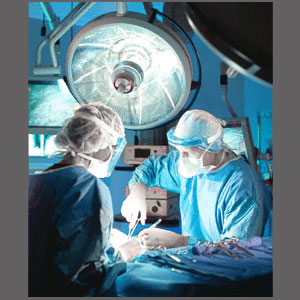
Emergency care for spinal stenosis is often needed when the condition eventually evolves into a neurological threat or when trauma suddenly exacerbates an existing stenosis issue to an acute state. Spinal stenosis is certainly a condition that can become a medical emergency, most often over time, but occasionally, the transformation can be quick and dire.
Emergency treatment for spinal stenosis is almost always surgical in nature. This is because the condition most often can not be effectively resolved using nonsurgical methods of care, except in rare cases of disc-enacted stenosis that are commonly seen after significant traumas, such as car accidents. In these circumstances, there may be other treatment options considered, depending on expressed symptomology.
This discussion provides an inside look at emergency care for spinal stenosis, including the types of treatment used, the circumstances that warrant emergency therapy and some important facts for stenosis patients to understand.
Emergency Care for Spinal Stenosis Necessity
Spinal stenosis is most often a long-term and slowly progressing condition. Most cases will not reach symptomatic levels and those which do usually do not present an emergency profile necessitating immediate treatment. However, some cases of stenosis can suddenly reach acutely symptomatic degrees naturally or more commonly, with a bit of help from some other occurrence, including all of the scenarios detailed below:
Trauma can greatly exacerbate existing spinal or neuroforaminal stenosis, possibly bringing on sudden and severe symptoms.
Compression fractures can occur in the elderly, often acutely worsening existing arthritic spinal stenosis.
Sudden presentation of herniated discs can exacerbate existing spinal and foraminal stenosis.
Development or worsening of atypical spinal curvatures and vertebral misalignments, such as scoliosis, lordosis, kyphosis and spondylolisthesis, can all worsen spinal stenosis to warrant emergency intervention.
Emergency care is usually reserved for stenosis where the central spinal neurological structures are threatened, such as in cases of spinal cord compression or cauda equina syndrome with dire symptomology like paralysis, incontinence or saddle paresthesia.
Emergency Care Methods
In virtually all cases, emergency care for spinal stenosis consists of surgical interventions to clear focal blockages of the central canal or open up sealed foraminal openings. Typically, these interventions are considered medically necessary and do not provide the patient with much time to seek a second opinion.
The usual approaches to treatment depend greatly on the source of the stenosis, but typically include laminectomy, discectomy, corpectomy and spinal fusion, with foraminotomy being used in cases of neural foramen stenosis. In a few select circumstances of purely disc-enacted emergency stenosis, less invasive treatment might be utilized, including IDET or nucleoplasty, but these cases are uncommon. You can learn more about all of these procedural options in our spinal stenosis surgery resource section.
It is generally agreed that nonsurgical spinal stenosis care should never be used in cases of emergency prevention, since only nonsurgical decompression has any hope of curing highly specific forms of disc-related stenosis and this therapeutic path takes weeks of regular treatments to accomplish.
Emergency Care for Spinal Stenosis Tips
If you are a patient with existing moderate to severe stenosis, you must consider the possibility that your condition might worsen acutely at some point due to circumstances beyond your control. Waiting for this to occur might limit your treatment options significantly. It is best to discuss the possibility of emergency treatment with your doctor ahead of actual need, in order to provide yourself with time to make decisions that may become relevant in your future.
If you find yourself in sudden need of emergency spinal stenosis treatment and have indicated dire symptomology, you will likely find yourself in surgery in short order. This drastic approach is needed to preserve neurological function and prevent further damage to sensitive spinal cord and spinal nerve tissues. If this is your condition, we wish you the best of luck with your treatment. At least spinal stenosis surgery generally demonstrates some of the best curative results of all spinal operations. This fact stacks the odds for successful resolution of symptoms in your favor, which is a nice change in the often disappointing back surgery arena.
Spinal Stenosis > Spinal Stenosis Relief > Emergency Care for Spinal Stenosis





